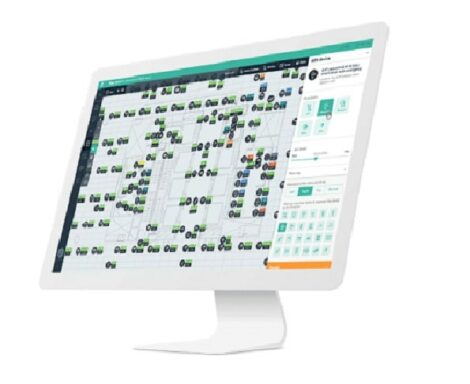 Does Your Building Need a Lighting Controls Upgrade?
Does Your Building Need a Lighting Controls Upgrade?
How often in the last 15 years have you upgraded to new technology? Are you still on dial-up internet? Do you use a “not so smart” phone and therefore a separate digital camera? Are you still using the same PC or laptop as you were in 2006? Do you store data on floppy discs? CDs? USB sticks? Or in the cloud?
The growth in technology over the past 10-15 years has been huge. A lighting control system is quite simply a technology, and development in lighting controls has advanced just as quickly.
What is surprising, is how lighting controls technology, when installed and programmed correctly, has been able to just keep working: every day, every week, every year.
When a System Fails
Very little thought is given to building technology while everything is working well. Often the system has been left to its own devices, with no regular monitoring or servicing of system components. It is only when things start to fail that the lighting control system becomes “centre stage”.
“The lights don’t turn off.” “The lights aren’t coming on.” “Our staff can’t work properly – this is a health and safety issue.” “The security lights in the carpark aren’t operating, this is dangerous and needs to be sorted immediately.”
When our engineers are called to look at a system that has worked perfectly for 10-15 years, or more, and we point out that an “upgrade” is really required, the building owner is often blind-sided.
“Really?” they ask. “Can’t you just replace the component that has failed?”
In some cases, we can buy more time by replacing the hardware that has failed on this particular occasion, but bearing in mind all components were installed simultaneously, once one or two units fail, more are likely to follow. Money spent on replacing failed equipment can therefore be a poor investment, as many more units are likely to fail thereafter.
Lighting Controls Upgrade
In most cases, technology has moved on since the system was initially supplied, and quite often replacement units are no longer available, or the system is no longer supported.
Most older lighting controls were unfortunately proprietary systems, and units were therefore not interchangeable – handcuffing the building owner to the manufacturer for the life of the system. Once support from the manufacturer is withdrawn, finding replacement hardware, and engineers with knowledge of the older, superseded systems becomes very difficult.
This is one of the reasons if a system requires updating or replacing, our recommendation would be to install a DALI-2 system.
DALI is an open protocol, and if one manufacturer is unable to replace a component, another will do so. No more “handcuffs” to a single supplier! Read more about DALI-2.
AU/NZ Lighting Control Standard
 Another reason for proposing DALI is that since last year, it is the only lighting control standard for Australia and New Zealand.
Another reason for proposing DALI is that since last year, it is the only lighting control standard for Australia and New Zealand.
By installing DALI-2 for your lighting control, your system is compliant with the latest standards.
Wired and Wireless DALI-2
Wired + Wireless
Additionally, DALI-2 supports both wired and wireless devices. For a retrofit system this becomes invaluable.
The older proprietary systems were installed using separate ‘bus’ cabling systems that, like network cabling, had to be run separately to the electrical wiring. DALI-2 wiring is a simple 2-core that can be run with the 230V system, or in the case of wireless, without the need for cabling at all.
DALI-2 allows DALI lights to be programmed individually, or in groups, and is not reliant on how circuits were run. This means lighting can be re-configured at any time to suit changes in the use of the building e.g. creation of meeting rooms from open plan areas, changes to racking layouts in warehouses, etc.
With the zencontrol DALI-2 system (wired and wireless) that we usually propose, in many instances the reprogramming to suit changing lighting needs can even be carried out remotely.
Security
 Security is another important element to consider when upgrading the lighting control system for your building.
Security is another important element to consider when upgrading the lighting control system for your building.
As technology advances, so do the threats from those trying to gain illegal access to your building system (hackers, etc.).
Your system must not only be robust and secure now but also allow security patches to ensure the system remains secure against future threats as they are identified. For this reason, you may choose to employ a system that can be monitored and maintained by your staff, and/or by industry experts to ensure it continues to operate at peak efficiency, but also gets updated regularly to ensure robust security is maintained.
Energy Efficiency
Older lighting control systems were mainly about scheduling and dimming lights. It may have been a requirement for energy savings that was the original reason for installing a lighting control system. The intention perhaps to reduce the time that energy-hungry lighting was burning in unoccupied areas, or when more than sufficient daylight was present.
The investment in a “lighting upgrade” to change from incandescent to fluorescent and then LED lighting was often financed from energy savings alone. For those who have not yet made the change to LED lighting, this would still be the case.
However many facilities have already made the change to LED lighting, and energy efficiency although still desirable, becomes a less important function for a lighting control system (LCS).
Public perception however remains important, and even though energy consumption may be much lower with modern light fittings, many businesses do not want to be seen as irresponsible in their use of power.
Data Gathering
 Today, a digital lighting control system can produce valuable data for building operations, contributing to making the entire building more efficient and comfortable.
Today, a digital lighting control system can produce valuable data for building operations, contributing to making the entire building more efficient and comfortable.
Data flows both ways allowing the LCS to gather invaluable information on elements such as real-time occupancy, air quality, lumen life, and much more.
This information can be displayed on user-friendly dashboards for ease of maintenance and better-informed facility management.
Human Centric Lighting
Difference in light colour has long been available. Even incandescent bulbs come in a variety of “whites” from soft white to daylight. LED lighting now offers new possibilities: Luminaires can be “tuned” to change in colour for different uses or times of day.
Digital control systems allow the tuning of lights to a specific correlated colour temperature, allowing the matching of any shade from a warm red glow, to blue-white daylight, without changing the bulb.
Colour tuning the luminaires can dramatically alter the appearance and feel of a space, increasing occupant comfort and satisfaction.
For example, cool daylight assists some people to feel more awake in the morning, whereas a soft white is easier on fatigued eyes later in the day.
Today’s digital lighting control systems can incorporate colour tuning to automatically meet the needs of building occupants.
Custom Zones/Profiles
 Previously lighting control systems used large rigid zones determined by the wiring schematic. Areas, often as large as 1000 sqm would have their lights switched simultaneously. Breaking a zone into multiple areas required expensive electrical wiring work.
Previously lighting control systems used large rigid zones determined by the wiring schematic. Areas, often as large as 1000 sqm would have their lights switched simultaneously. Breaking a zone into multiple areas required expensive electrical wiring work.
DALI allows large lighting zones to be split into an unlimited number of smaller, more responsive zones. Zones can even overlap!
Thus a DALI control system allows the creation of custom zones that include any group of luminaires, along with customized profiles that adapt to different uses.
For example, office staff may want overhead, task and accent lights to all come on when they enter a room, with a reasonably long delay before turning off if there’s been no movement sensed for a while. The cleaning crew, however, will no doubt want the occupancy sensors to trigger a room’s ambient lighting, but with a short shutoff delay once they leave the room.
Additionally, lighting is not a case of “one size fits all”!
Different types of work, and differences in the workers’ ages, eyesight etc, can demand quite different levels of lights.
DALI can even allow a single light fitting to be controlled separately, allowing individual workers to have control of the task lights above their individual workstations.
The free app that comes with the zencontrol system, allowing workers to change the dimming level of lighting above their desk, (but not elsewhere) is proving very popular.
The Cost of a Lighting Controls Upgrade
You will likely be quoted similar amounts for a lighting controls upgrade from competing suppliers.
The important thing to consider is what you receive for your investment.
It is well worth putting some time into creating a strategy to ensure you get the result you want, and achieve a genuinely ‘smarter building’).
You require a lighting controls upgrade that not only meets your needs now but can expand to meet changing needs in the years to come.
Additionally, it should be “future-proofed” from a security point of view, to ensure it can be updated whenever new security threats are identified.


